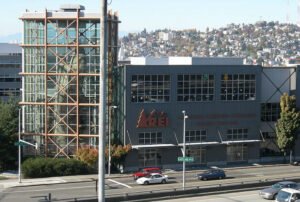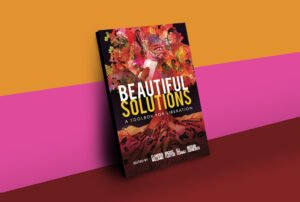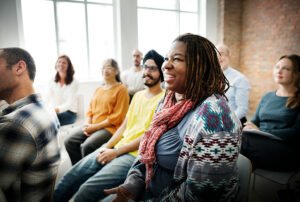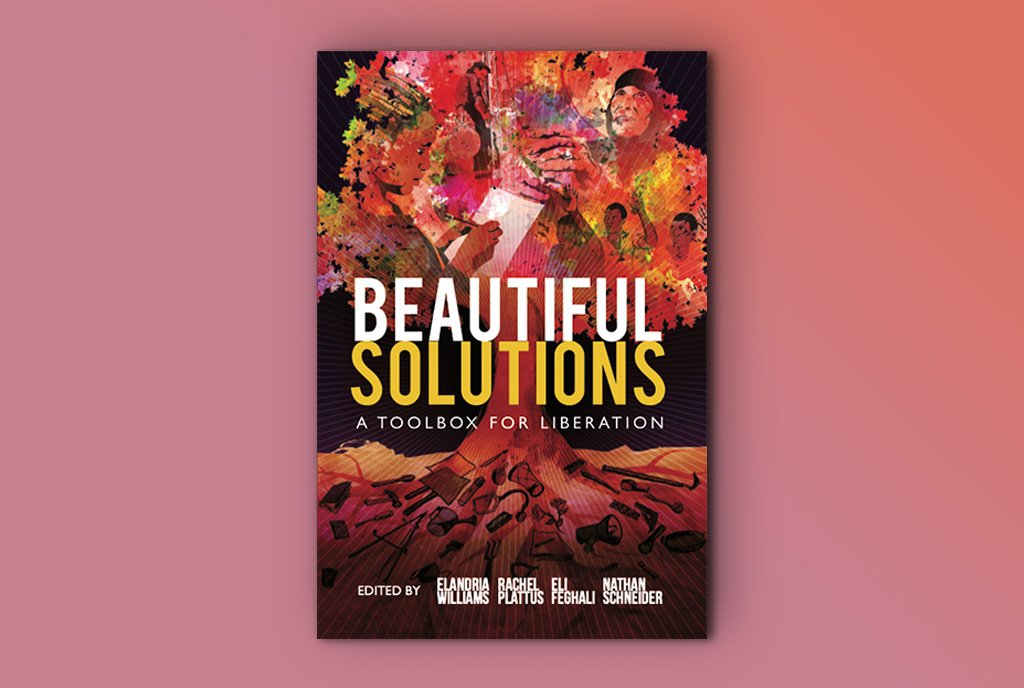
Truth to Power is a regular series of conversations with writers about the promises and pitfalls of movements for social justice. From the roots of racial capitalism to the psychic toll of poverty, from resource wars to popular uprisings, the interviews in this column focus on how to write about the myriad causes of oppression and the organized desire for a better world.
This interview has been edited for length and clarity.
Steve Dubb: You indicate in your book that you are writing about the “who, why, and how of democratic practice.” Could you expand on this?
Marshall Ganz: Democracy is not something you have; it is something you do. If you’re not doing it, it’s not real. Sadly, in our country, there is less and less of it being done.
Take the replacement of self-governing organizations with nonprofits or NGOs: there is nothing democratic there. It is almost like unions are one of the few remaining forces where people are actually practicing self-government.
It is kind of hard to have any real understanding of what democracy means in terms of how we interact with each other and how we govern ourselves when it is not part of your daily experience. It hollows out any real understanding of democracy.
SD: You mention a shift from self-governing organizations to NGOs and nonprofits. How has that harmed democratic practice?
MG: There is an interdependence between our political structures and our civil society structures. It was typical, really up until the 1960s, that large organizations in the United States were representative organizations. There would [be] a local, it would pay a per capita up to the [regional] level, and then [the regional would pay] up to the national level. [This meant that power was rooted at the local level.]
That all comes apart in the 1960s and 1970s. [Harvard political scientist] Bob Putnam writes about the social capital crisis. But that’s not a cause. What really happens is there is a very dramatic shift in the dynamics of membership growth and funding.
“When you become dependent on donors for your operations, then your constituency falls into second place.”
It starts with direct mail. We did a study of the Sierra Club. We saw this so clearly. Up to a certain point, chapters drive membership growth. Then, there is an inflection point, and membership growth goes way ahead of the growth of chapters.
The difference is that at the national level, new technologies make it possible…to reach so many more people, raise money that way, [and] conduct elections that way. All of a sudden, the local groups that had been the source of power for the organization become a client of the organization.
You see this pattern of professionalization in advocacy groups in all this stuff. That is part of it.
The other part of it is a boom in philanthropy. It is the other side of the inequality: “All these people out here are suffering, so now we are going to be philanthropists.”
So then comes the donorocracy. Nonprofits are governed by boards. The boards are usually chosen by the wealthy. They are not elected. And then the boards hire people, and they are employees, and they do whatever they do. And there may be beneficiaries, but they are not beneficiaries that have any voice.
In some ways, yes, we want participation. But we decide what happens. When you separate participation from governance, you have—like the institution of the Catholic Church for so many years—high participation but tightly held governance. That is typical of how NGOs are structured.
The problem in the organization world is that then when you become dependent on donors for your operations, then your constituency falls into second place. Your success depends on your donors, not your constituency.
With 501c3s, you often take the most active people that care the most and you put them in a nonpartisan ghetto. It is a ghetto, because parties matter in politics. Politics is the means through which people connect with each other to govern themselves.
People say, “I don’t like politics; I like purity.” Purity is fine but has nothing to do with power. And politics has a lot to do about power. The conservative assault on government is really an assault on democracy, and it has been going on for many years.
SD: In your book, you identify building relationships, telling stories, strategizing, acting, and structuring as “five key practices of organizing.” Could you discuss this?
MG: I think of organizing as a form of leadership. Our approach is posed by the three questions Rabbi Hillel posed when asked, “What do I do with my life?”
“Leadership…is accepting responsibility or enabling others to achieve shared purpose under conditions of uncertainty.”
In response, Hillel offered three questions: If I’m not for myself, who will be for me? It’s not selfish, it is self-regarding. To see others, you need self-awareness. The second: If I am for myself alone, what am I? It’s about the fact that we are relational creatures. Finally, he says: If not now, when? It’s not about jumping into moving traffic; it is a caution against what Jane Addams called the snare of preparation.
I have become a big fan of [General Dwight David] Eisenhower. Somebody was interviewing him after D-Day and said, “Boy, planning must have really been important.” Eisenhower replied, “Yeah, planning was important, but plans are useless.” Point being that until you get into action, you can’t learn. You need to learn to be effective. So, to me, leadership is the interaction of self with others in action.
Then there are the challenges of hands, head, and heart. A leader who faces a challenge asks themselves, Do I have the tools to deal with this? That’s a hands challenge. Can I use my resources in new ways? That’s a head challenge. And where do I get the courage? Where do I get the hope? How do I inspire hope and courage in others? That’s a heart challenge.
Leadership, I’d argue, is accepting responsibility or enabling others to achieve shared purpose under conditions of uncertainty. Organizing is a form of leadership in that spirit. Only the first question is not, What is my issue? It is: Who are my people? Second: What are the changes they need because of lived experience? Finally: How do we work with each other to turn the resources we have into the power we need to achieve the change we want?
And it is also about power. There is so much confusion about power. Power is not something you have. It is influence created through interdependence. Where we have an alignment of needs and resources, we can combine to create a credit union or co-op because of our capacity.
But if someone else has resources that we need to meet our needs and our resources are not relevant to theirs, then we can wind up in a situation where their will substitutes ours because of the dependency that is created. That’s domination. That’s power over. Then, we have to figure out how to turn resources we do have into power that we need to get what we want.
SD: You make a distinction between resources and power. Could you elaborate on this?
MG: I got involved in organizing originally in the Civil Rights movement in Mississippi. The Montgomery Bus Boycott was seminal for the Civil Rights movement. What they discovered was how individual resources could be turned into collective power. It is a very dramatic story, but basically what they discovered is that feet could be a source of power. If you use your feet to walk to work instead of using your feet to get on the bus, your individual dependency on the bus company turns into the bus company’s dependency on a united community.
“Resources matter, but the use of resources also matters. That’s what puts leadership and creativity back into the picture.”
That’s really at the heart of it: How do we transform the resources we do have into the power we need to get the change? When I was working with the farm workers, [the employers] were breaking the strikes. We discovered that grapes could become a source of power. That is, eating them and getting supermarkets to stop selling them. All of a sudden, a grape becomes a resource that leads to power through organization.
The American colonists did the same thing with tea. [Mahatma] Ghandi was doing the same thing with salt.
When I came back to school and started my PhD, I came across an article called “The Insurgency of the Powerless.” It was about the farmworkers in the sixties and seventies. It argued basically our success was due to structural factors, and that we [the United Farm Workers] had nothing to do with it. It pissed me off.
It put me on the path of writing my first journal article and my dissertation, which became my first book, Why David Sometimes Wins. It is about how to leverage your resources in ways that can disempower those who are oppressing you.
And yes, the resources matter, but the use of resources also matters. That’s what puts leadership and creativity back into the picture.
SD: You argue there is a trend toward theories of change that eschew power analysis and instead focus on data, moral suasion, or storytelling. Why does this trend exist?
MG: I’m a big fan of storytelling. But you need understanding of what it is, and what its role is. When I was with the United Farmworkers, we had to have a story, a strategy, and a structure. Why are we doing this? That’s story. How? That’s strategy. How do we organize ourselves to do it? That’s structure.
The dynamic between strategy and story is really important. Because if there is no story, then the value becomes just the strategy. It is not in service of something more significant that we can weigh the strategy against.
There is a new book out called Hospicing Modernity by Vanessa Machado de Oliveira. She argues basically that the whole capitalist project is not sustainable and that we are seeing that. So, we better give things a decent burial while we get busy creating what we need to survive as humans. It sounds really radical. It feels like where we are.
In terms of why things are the way they are, there is also a new book by Daron Acemoglu, who just got the Nobel Prize [in Economics]. His new book, Power and Progress, is about power and technology.
What his studies point out is that when a new technology is introduced, it often makes most people poorer, not richer. It makes a few people richer. It takes a while for people whose position has been destabilized to figure out how to use political structures to counter the impact of the concentration of wealth that is associated with new technology.
It is the opposite of “the internet will make you free.” We have an economic system and economic model that dehumanizes. It turns us into users. It turns us into data points. [The late Harvard political scientist] Sid Verba used to say that liberal democracy is a gamble that voice can balance wealth. In other words, political power—citizenship—can balance ownership. We are kind of [on] the losing end of that and have been. But that’s not to say we’re done.
SD: Much of what goes under the name of organizing is more akin to mobilizing. Could you elaborate on the difference and why it matters?
Sign up for our free newsletters
Subscribe to NPQ's newsletters to have our top stories delivered directly to your inbox.
By signing up, you agree to our privacy policy and terms of use, and to receive messages from NPQ and our partners.
MG: Mobilizing is a tactic. And social media has facilitated that by reducing the cost of information sharing.
So, instead of building commitments to each other and building real organization, we engage in these transactions where we show up and then we go home, and nothing is built. And so, the mechanisms through which you develop strategy are not there because there is no continuity. And the only continuity tends to be provided by the people who can keep the funding going so then they can strategize. But it’s not based on having a real base of people.
And so, with the mobilizing, one thing that happens is—well you know the cartoon figure, Wile E. Coyote, who runs off the cliff, looks down, and there is nothing there. That’s what happened to Sunrise. They were great at mobilizing. They looked down and there was nothing there. They are now trying to reorganize themselves in a way that is there is something there.
Consider also, for example, the 2024 election campaign: There were a bunch of people with a lot of money giving money to community organizations to canvass. The donors’ item of value is how many doors you have knocked on.
What does that even mean? There is a decoupling of inputs and outputs. There is a gap in the middle where there is no theory of change. It is just input, input, input. And then how is that supposed to connect? It’s substituting money power for people power. When you have a genuine organized volunteer-based operation, it is a different deal.
I know community organizations that are struggling with this. Because they want to be organizing. But all this money comes in and then they are running these mobilizing operations. It is because the sources of money want something that they can count.
SD: How can movements today effectively negotiate this reality that they often rely on external resources that misdirect them?
MG: It is going to take sacrifice. It is going to take risk-taking. If you look for energy sources, probably the biggest energy source for change globally is the women’s movement.
I see it in my classes. We work with people in the Middle East. We work with people in India. My classes tend to be two-thirds women. We are talking people in their thirties, but from all these different cultures. That’s a powerful energy. It’s happening. It’s there.
Now the question is: What to make of it? How to equip the energy with the structure that it needs to be as powerful as it can be?
The same thing with young people and the young people’s energy around climate justice. There it is a similar challenge. If the energy is there, that’s a huge piece of it. Because you can’t manufacture energy.
“We can’t just rely on virtuous people—we have to create virtuous institutions. And that’s what the whole democratic experiment is about.”
With immigrant communities, the Dreamers are an interesting example: they got highly energized because there was some hope. You don’t generate energy without hope. Grievance does not produce energy. There has to be this other element. I like the Maimonides definition: hope is belief in the plausibility of the possible as opposed to the necessity of the probable. In other words, it is always probable Goliath will win, but sometimes David does.
It is that place of possibility between certainty and fantasy. It is the domain of “could be.” And that takes courage and it takes imagination. And it doesn’t happen in a consulting firm.
SD: You note that winning an organizing campaign is typically one goal of three, and the others are strengthening the organization and building leadership. Could you discuss how campaigns seek to balance these goals?
MG: What is typically missing is organization. In other words, what’s gone along with the [focus on issues] is campaigns, campaigns, campaigns.
Campaigns—they are about change. They are the rhythm of change. They have a specific objective. And they may accomplish the objective or not.
But what is being built? That’s often missing. That is where organization comes in, which is the rhythm of continuity. When I was working with the farmworkers’ union, we had lots of different campaigns, but we were building a union.
So, that’s the missing piece. To the extent that we can bring mobilizing back into the context of organizing, then it becomes a tactic, which is all it is. A lot of mobilizing is tactics in search of a strategy. There is no strategic context to it because there is no organizational venue in which that strategy is being developed.
So, yes, it is a balance. Since [the theorist] Robert Michels discovered the iron law of oligarchy, which states that there is a tendency for continuity to suffocate change, it is the challenge of democracy generally. Unless there are mechanisms of accountability, everything breaks down.
To me, accountability is one of the most moral, psychological, political, and economic realities about how humans work. We can’t just rely on virtuous people—we have to create virtuous institutions. And that’s what the whole democratic experiment is about. Can we do that? Can we actually balance power? The jury is still out.
SD: You wrote that from the Student Nonviolent Coordinating Committee, you learned the dangers of a radical diffusion of power, while the United Farm Workers taught you the dangers of too much concentration of power. What does a happy medium look like?
MG: There is a book by Roberto Unger called Democracy Realized. Democracy is a practice; it’s not a thing. The key is flexibility.
Once, I worked with a Jordanian woman organizer who said, “I see that this is not a blueprint. This is a roadmap of where to look within our own cultures, our own histories, and our identities for these sources of solidarity and love and courage and all of that.” And I think she really got it right.
So, this problem—radical decentralization, radical centralization—you have to look at the power dynamics.
Sunrise believed in radical decentralization [using self-governing activist cells] based on a theory of DNA: “We now have our DNA, and all will go forth based on that.” They look back now and say, “Oh, that was nuts.” There was no mechanism to coordinate to exercise scale, or even to learn. Because you have all these isolated groups out there doing their own thing. So, that is one extreme.
But then the other extreme is where it is all consolidated at the top. In the book, I talk about strategy and where it comes from—strata, the Greek word. The general, the strategos, is up on the mountaintop overlooking the field. He develops a theory of change about how to deploy. And the soldiers in the field, they are called taktikos. That’s where you get strategy and tactics.
When a cloud gets in between the two, that’s when you have problems. The local people have intimate knowledge of context—no question. They need each other. If there aren’t mechanisms for decision-making, communication, and legitimacy within the organization, then they fight each other. The world is littered with that.
“When you organize out of hope, you’re saying there is a possibility, and you have possibility, and we build out of that sense of possibility.”
How resources are structured and how work is structured have a lot to do with whether it works or not. Authority, if it is all centralized to make decisions, if resources depend on the fundraiser who has access to the donor, then you’re not going to have widely distributed power because that is where the resources are coming from. If they are generated locally, then it is more democratic.
If the work is organized like these canvassing operations—like Charlie Chaplin in Modern Times, good old industrial discipline—it will be centralized too. If you look at the dynamics of how the work is done, how authority is structured, and where the resources actually come from, then you can see how the organization works and not get caught in just reading the bylaws.
How do you strike that balance? In the UFW, we allowed power to become too centralized, too distant. We were very democratic at the base. Committees were elected by workers. That was all good. Then we had an executive board at the top. And there was nothing in between.
What that meant was there were no local unions and no regional level where somebody could consolidate enough power to hold the board accountable. There was democracy at the base, but it was so scattered and diffuse that it could never challenge the center.
It really is a question of how we structure things. It is also a question of what the narrative is, what the culture is, and the values that we are trying to enact.
With [Harvard sociologist] Theda Skocpol, we did this whole study of representative organizations in the United States from the American Revolution up to the 1960s. There were 65 we identified, all of which had at least 1 percent of the eligible population in them.
Many were fraternal organizations. But there was also the Women’s Christian Temperance Union and the Farmers’ Alliance. They often started when somebody someplace tried something. And it works. Then they find a way to scale, which rarely involved getting a grant. The scaling was usually people from the first project go elsewhere and start it. It was an evangelical process through people.
[Harvard business professor] Rebecca Henderson did a study of diffusion of innovation in Silicon Valley. The dominant literature said that there was a model, and they replicate it. But what she found actually happens is that new firms hire people from the original firm to bring their understanding with them.
SD: Is there anything else you would like to add?
MG: We over-complexify things by making them abstract. When you get down to the nitty-gritty, it is people. I am not saying it in a romantic way. But people can be pretty creative to develop ways to exercise power—for good or evil.
I think whether you mobilize around fear or hope is fundamental. When you mobilize around fear, what you are doing is you are robbing people of their agency. You’re locating the source of the fear outside of them. It is out there. All you have to [do] is get rid of “them.” It is the opposite of agency.
When you organize out of hope, you’re saying there is a possibility, and you have possibility, and we build out of that sense of possibility, which aligns with having some power. Barack Obama was a hope mobilizer. And Donald Trump is the opposite.
One of the sad things about the 2024 elections is that both candidates were really “Yes, I can” candidates [versus “Yes, we can”]. Trump was, “I am your avenger.” Kamala Harris was the protector: “I will protect you.”
Neither one acknowledged the fact that we, the people, are agents. And that unless that we is part of the solution, it’s not going to happen.












